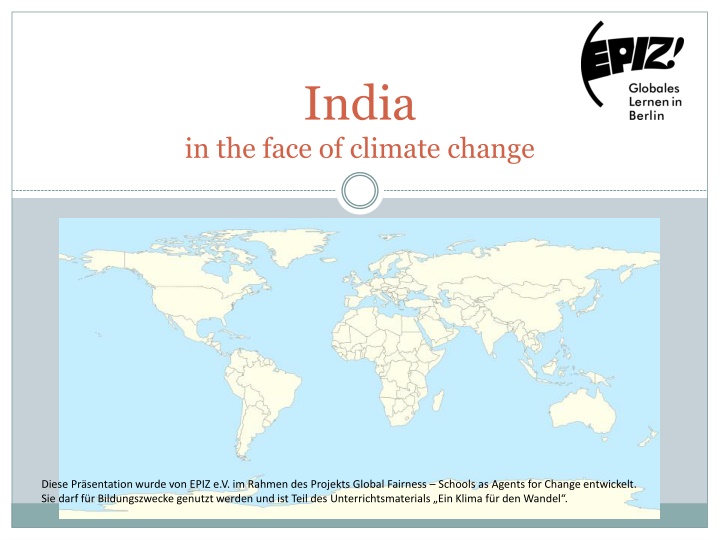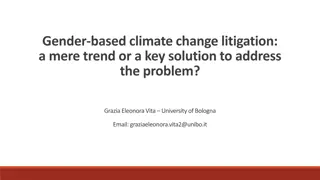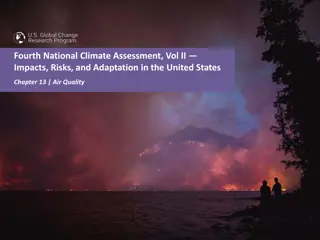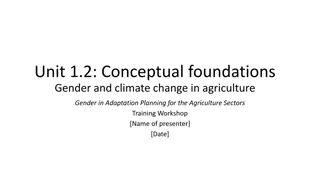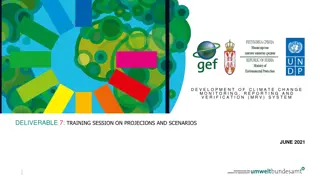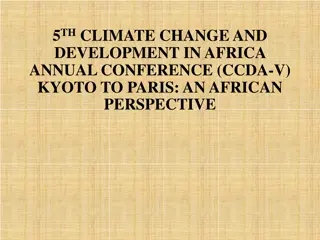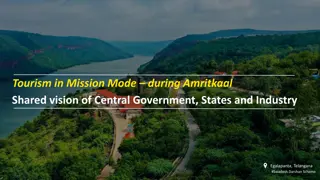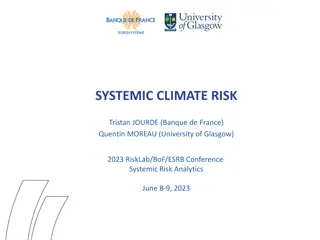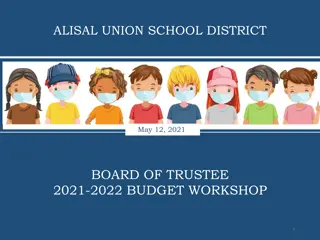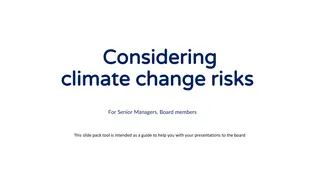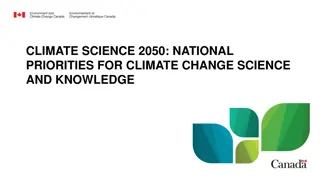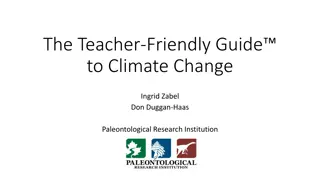India in the Face of Climate Change: Historical Background, Consequences, and Projections
India, a country with a rich historical and political background, faces significant consequences of climate change, impacting its monsoon seasons and rural population. This presentation explores historical roots, current challenges, and future projections, emphasizing India's position in climate negotiations.
Download Presentation

Please find below an Image/Link to download the presentation.
The content on the website is provided AS IS for your information and personal use only. It may not be sold, licensed, or shared on other websites without obtaining consent from the author.If you encounter any issues during the download, it is possible that the publisher has removed the file from their server.
You are allowed to download the files provided on this website for personal or commercial use, subject to the condition that they are used lawfully. All files are the property of their respective owners.
The content on the website is provided AS IS for your information and personal use only. It may not be sold, licensed, or shared on other websites without obtaining consent from the author.
E N D
Presentation Transcript
India in the face of climate change Diese Pr sentation wurde von EPIZ e.V. im Rahmen des Projekts Global Fairness Schools as Agents for Change entwickelt. Sie darf f r Bildungszwecke genutzt werden und ist Teil des Unterrichtsmaterials Ein Klima f r den Wandel .
Contents Historical and political background 1. 2. Consequences of climate change in India 3. Projections for the next 30 years 4. India s position in climate negotiations
1. Historical and political background First civilizations (200 000 BC- 1000 AC) Human activity on the Indian Subcontinent dates back to 200 000 BC. High skills in natural sciences, e.g. astronomy. Foundations of the castesystem were laid around 600 BC.
1. Historical and political background The role of religion Hinduism and Buddhism were founded in India and spread from there. The Indian Subcontinent was conquered by Muslims around 1300 and the Muslim belief was introduced in the 16thcentury.
1. Historical and political background Colonial dominion First trading posts were set up by England and France in the 17thcentury. At the end of the 18thcentury, England began to expand its territorial power by the use of force. The English Empire colonized and exploited the Indian population, e.g. they introduced English as the official language and assumed the highest level of power.
1. Historical and political background India today Colonial power ended 1947 due to independence struggles. (One of the leading protagonists was Mahatma Gandhi). India designed its first democratic constitution in 1950. Official language: Hindi Population: Over 1.2 billion people
2. Consequences of climate change in India Climate change affects monsoon seasons: droughts and floods. The rural population is most vulnerable due to its dependency on natural resources. Coasted regions where mostly the poorest live are most strongly affected by natural disasters.
3. Projections for the next 30 years Water supply is at risk because of the melting of the Himalayan Glaciers, which are the source of fresh water. Rise of sea-level threatens coastal population. Temperature is predicted to increase about 0.6- 1.2 C. Rainfalls are projected to become stronger. Monsoon seasons will shift more and more. Natural catastrophes are likely to increase in intensity and frequency.
4. Indias position in the climate debate India ranks third in the world in terms of CO2- emissions. However, compared to population numbers, emissions are relatively low. National Action Plan against Climate Change since 2008: Investments in renewable energies, but no obligatory goals for reduction of emissions. India has to balance poverty reduction and climate protection.
4. Indias position in the climate debate India claims common but differentiated responsibility in climate protection: ...demands technical and financial support for climate protection from older industrial countries, ...speaks against economic sanctions for developing countries, ...claims stricter goals for older industrial countries.
Sources http://www.bpb.de/internationales/asien/indien/44 384/geschichte-bis-1947?p=0 http://india.gov.in/india-glance/profile http://www.bpb.de/internationales/asien/indien/18 9166/indiens-umweltpolitische-herausforderungen http://www.klimaretter.info/politik/hintergrund/18 040-obama-draengt-indien-zu-klimaschutz http://www.adaptcap.in/climate-change- projections/
